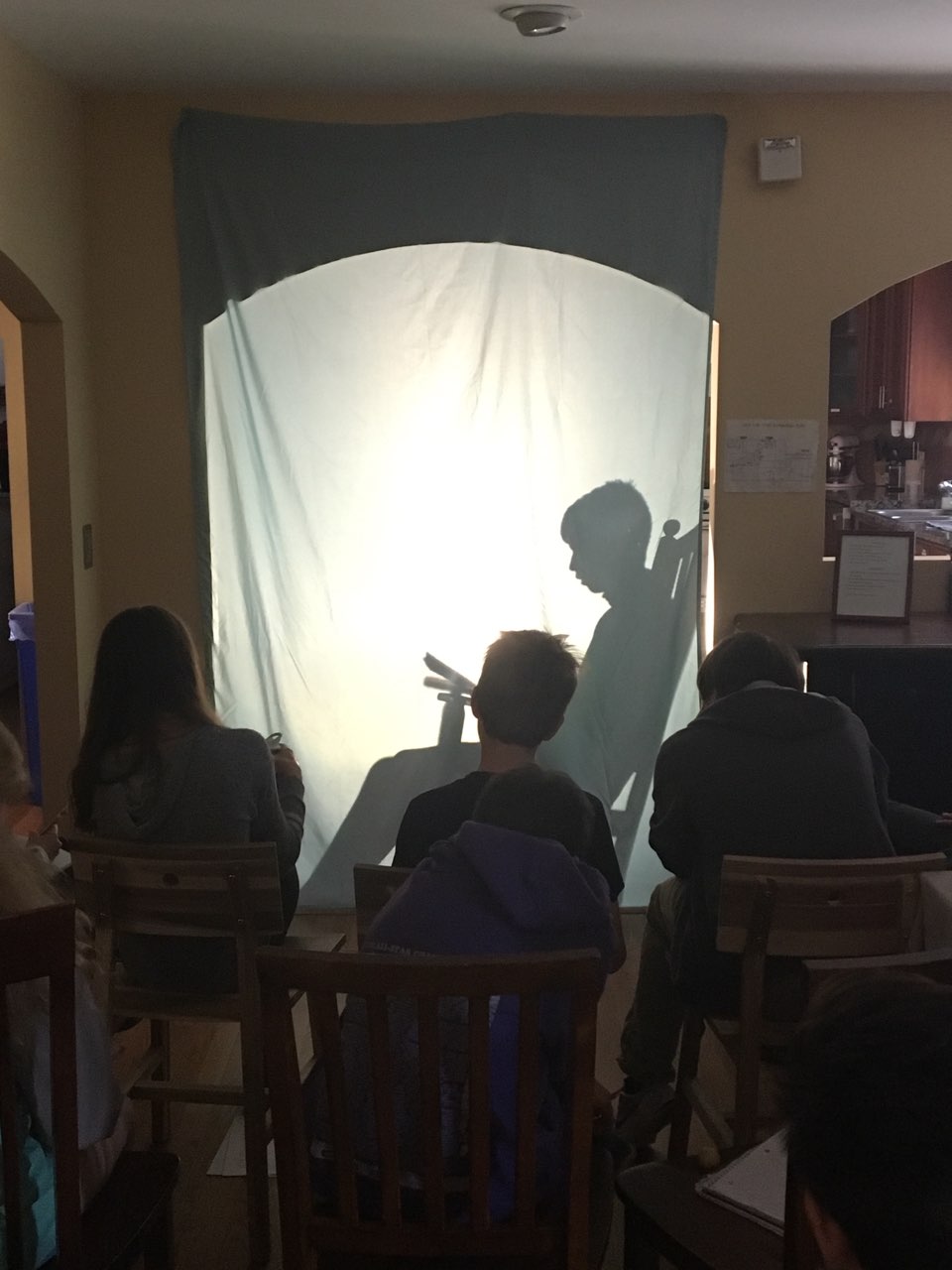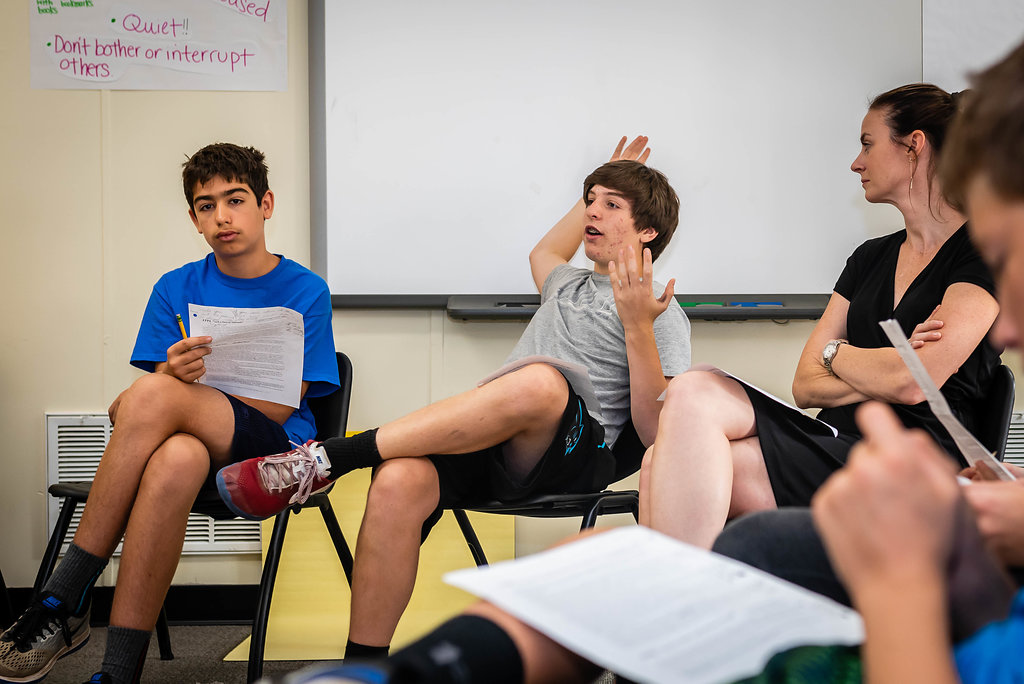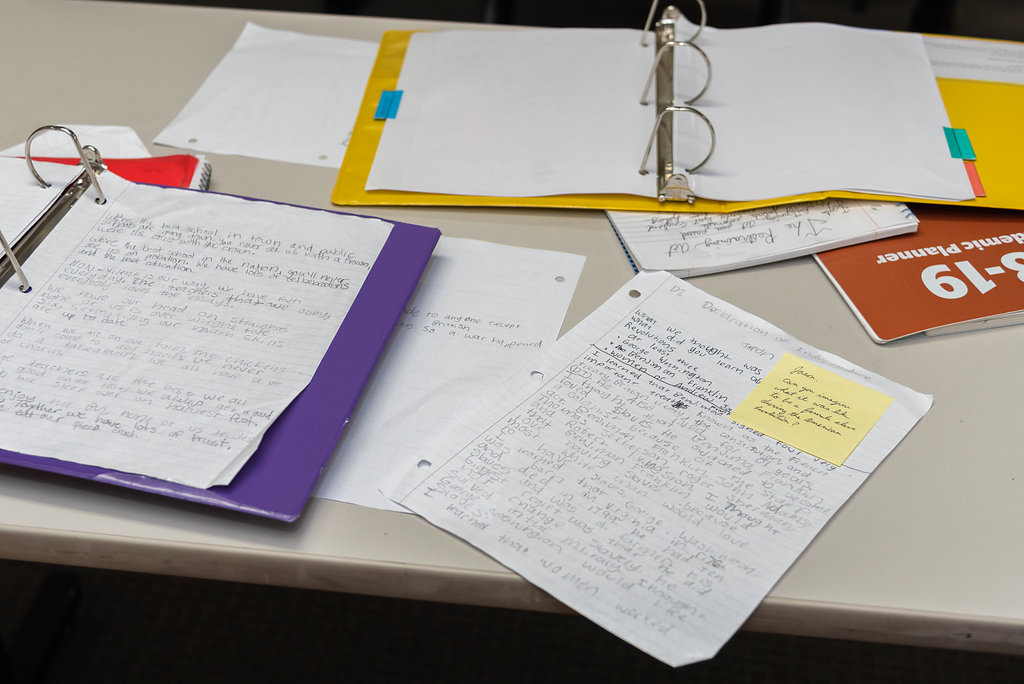Education for life

Language & Humanities
language
Mastery of English is of high importance within the adolescent curriculum. Language permeates the Middle School environment as students read, write, spell, present, analyze, memorize, create, sing, teach, and explore the history of words. Because development of written and oral skills requires constant use and practice, students are given boundless opportunities to use language in its many forms, and to celebrate its beauty, power, and mystery.
Adolescents read age-appropriate literature of their choosing — which often provides additional context for Humanities and Occupations projects. Through workshops and seminars, students learn to analyze plot, literary structure, themes, character, writing styles, and figurative language. In addition to reading classic novels, students delve into non-fiction, poetry, biographies, philosophy, newspapers, journals, scripts, and the work of peers.
Written skills are honed in a variety of ways, as well. Student may direct their creativity to writing fiction, poetry, scripts, or lyrics. Expository writing takes many forms, including composition of reports and essays, proposals, presentations, summaries and outlines — and even letters to local and national government representatives.
The intimate setting of the Waxhaw Campus allows for abundant practice of oral skills, as students are able to present frequently to small groups and to the community as a whole. Adolescents work on articulating concepts and points of view in small group and seminar settings, as part of formal presentations, through performance art, and at forums such as student council meetings. Additionally, students have formal training in Spanish throughout their tenure.
Humanities
The humanities program allows adolescents to connect through study and experiences with the whole of human history, from hunter-gatherers to modern times. The curriculum focuses on history, culture, art and music. Classes include lectures, primary and secondary source reading, seminar discussions, research and formal writing, off-site visits, guests speakers, dramatic and artistic expression, experiential reproduction of historical settings and artifacts, and dramatic presentations to the community.
The Middle School art program is designed to break down barriers and provide a means for internal order and self-awareness. Outlets for creativity include: narratives, painting, poetry, pottery, sculpture, dramatizations, speeches and debates, journaling, seminars, and project design and execution.
Much of the Humanities curriculum is project oriented.
Projects are organized in six-week cycles and follow the model of the Three-Period Lesson developed by Maria Montessori:
- Introduction or key lesson, in which the guide selects and provides the general subject or area to be studied.
- Work and study, where the student selects a specific topic to pursue based what they found interesting from the overview. The student and guide identify resources to be used, including experts and guides, written and electronic materials, and field study. The student works with the materials, acquiring knowledge and skills, until they have attained mastery of the topic.
- Demonstration of acquired skills and/or knowledge through presentation or "passing on" such knowledge or skills to their peers and greater community.




